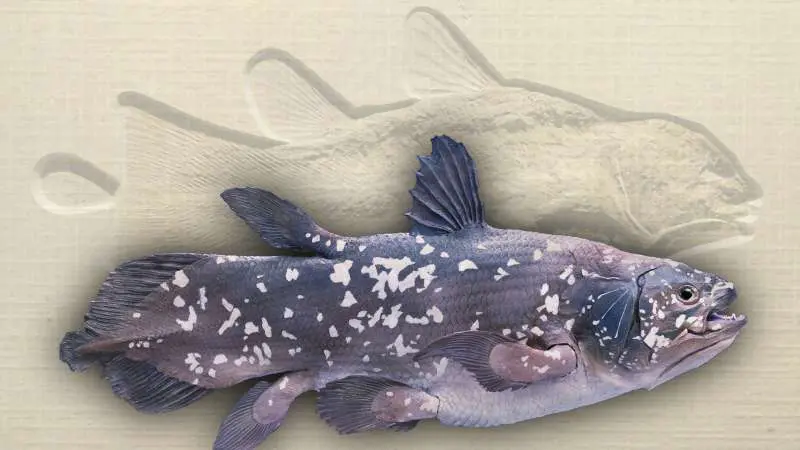I scoured the beautiful, thick glossy pages with a skeptical eye. Internally, questions and objections were popping up all over my mind as I fleshed out the ideas presented. The book was “Living Fossils”, by Dr. Carl Werner. It’s a popular young earth creation science book, and I definitely believe in a Biblical young earth. However, since my geology classes in a secular college, I’ve learned how to borrow the mindset of an evolutionist or old earth believer enough to test the weaknesses and strengths of different young earth models or ideas. The common young earth view on living fossils is that creatures found both in the fossil record and alive today are a problem for evolution because they remain unchanged. Today, let’s break down four common arguments against this view of living fossils (more on living fossils here)
1. Not the exact same genus & species name
Many of the fossil creatures mentioned in Dr. Werner’s book are classified in a different genus and/or species name than they have today. Some of the fossils don’t have a species name at all. However, keep in mind that naming a fossil can be tricky. The fossil versions can be squished, look different with various angles, or have missing parts. Soft body parts, color, behavior, and other details that help us identify a creature usually don’t get preserved in fossils. However, even if we could tell that these creatures were from a different genus and species than the living versions, the point remains that they appear very similar and unchanged, despite vast amounts of supposed evolution.
2. Limited information available
Good scientists will readily admit that we don’t know everything about the fossil record and evolution. If a fossil creature, thought to be long extinct, suddenly appears alive today, some people say it just means we have more information now and need to change their evolutionary dates. The same thing would be thought when living creatures are found deeper inside the fossil record than evolutionary ideas predict. But, this kind of thinking side-steps the problem that these creatures remain unchanged over supposed millions of years of transition and dramatic change in other creatures. Of course, this leads us right into the next objection to living fossils:
3. Evolution doesn’t require a creature to change
Could a creature stay the same, if it just had the right conditions? Perhaps. But, “Change over time” is the main point behind the idea of evolution. The theory of evolution is constantly changing. Many scientists think this is good and scientific. But, if a theory constantly needs to be adjusted because it failed after being tested against observable data, keeping an open mind to considering different theories might be wise. The use of true scientific method should have eliminated evolutionary theory long ago because it fails testing. It’s interesting to note that we find many examples of living fossils (creatures staying the same) but even supposed transitional forms (creatures evolving) are quite rare in the fossil record.
4. Most living fossils in Dr. Werner’s book are Mesozoic (dinosaur era)
According to the evolutionary model, the “dinosaur era” or Mesozoic rock unit, is in the middle of the fossil record (not counting the Precambrian rock units – more about rock units here). Theoretically, there would have been plenty of time for the evolution of many complex, modern-looking creatures. At the same time, the Mesozoic isn’t too far from modern times for some creatures to survive, according to the evolutionary timeline. Although Dr. Werner focused on dinosaur-era fossils, there are numerous examples of much “older” living fossils, found deeper in the fossil record. Numerous living fossils can be found in Carboniferous and even Cambrian rock layers.
Are living fossils a good argument against evolution? There are a number of stronger arguments for young earth creation I would use first, like soft tissue in fossils and helium in granite. But, living fossils do present a good question for evolution and a challenge to the way people think about the fossil record. We tend to think that fossil creatures lived in a “pre-historic” world that was very strange and different from our own. However, Dinosaurs and many other fossil creatures lived with things that looked a lot like our modern creatures. Living fossils are a beautiful illustration of the faithfulness and mercy of our Creator, God. He has preserved so many amazingly designed creatures. This is not preservation through heartless favor of evolution, but by God’s mercy through His righteous judgment. Just as He preserves those creatures, He can preserve you, too.
©2017 Sara J. Mikkelson
Read previous Articles in this Series:
- Exploring Living Fossils – Part 1
- Exploring Living Fossils – Sea Life – Part 2
- Exploring Living Fossils – Land Lovers – Part 3
References:
- Werner, Dr. Carl. Living Fossils. Evolution: The Grand Experiment, Vol. 2. 2008. Audio Visual Consultants, Inc. New Leaf Press. Green Forest, Arkansas, USA.






